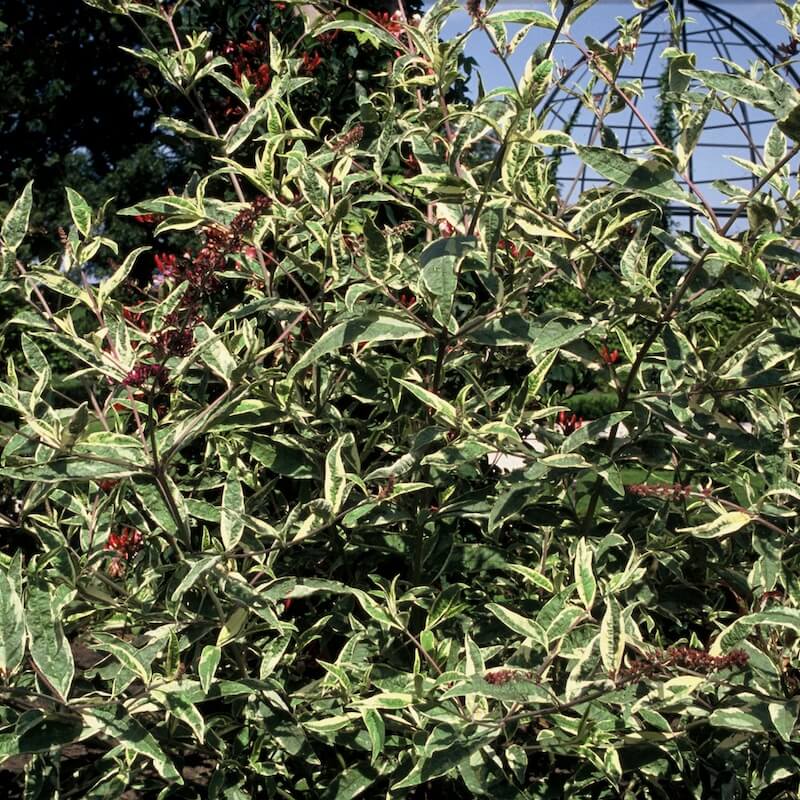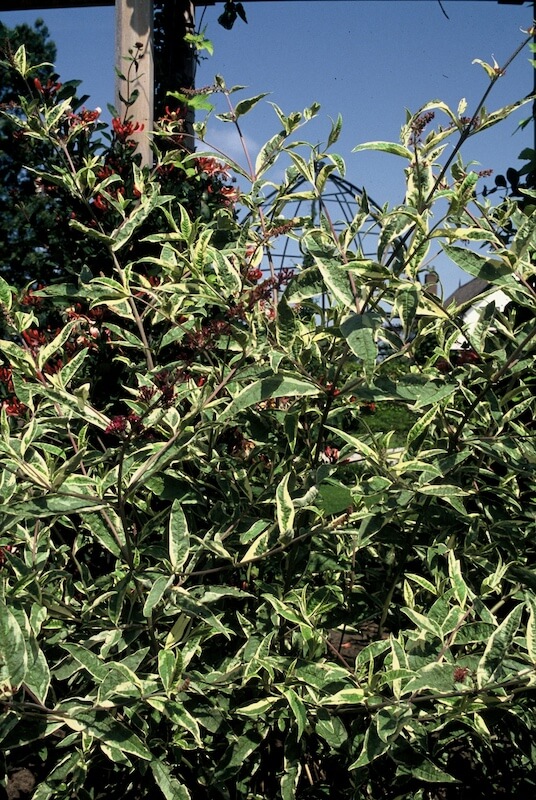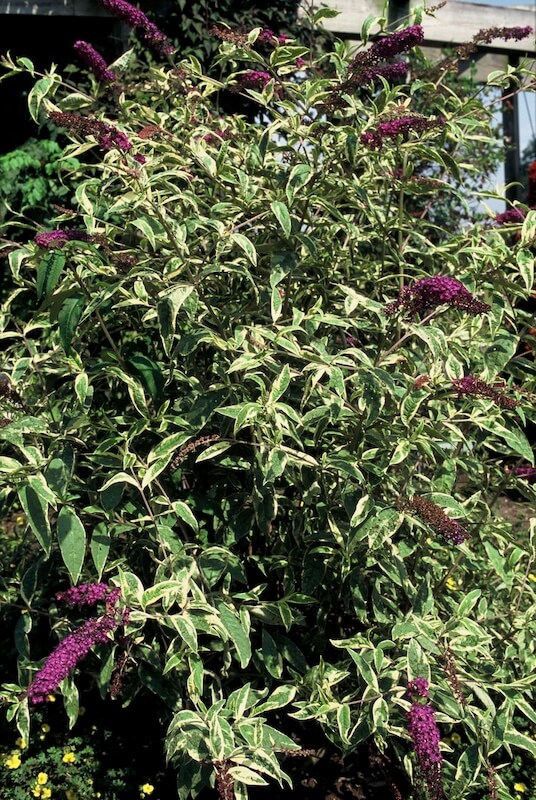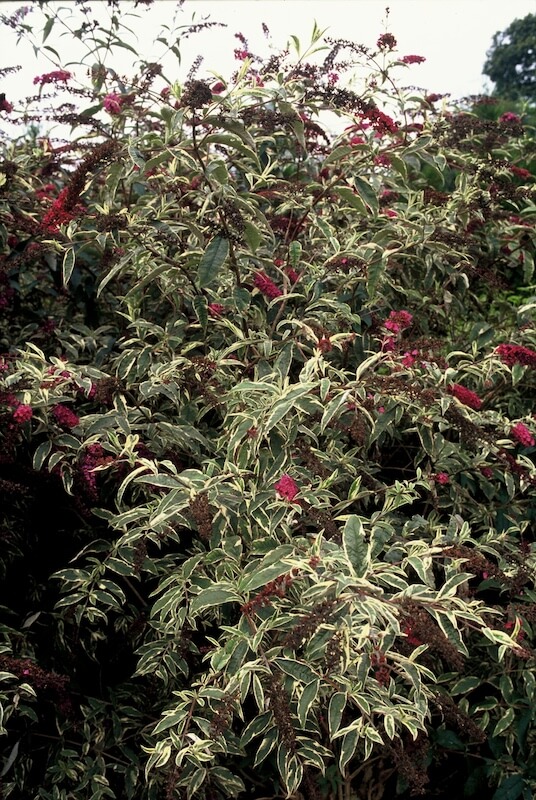
Position
- Prefers a position in full sun to encourage the strongest flowering and compact growth
- Ideal for borders, pollinator-friendly gardens, and mixed shrub plantings
- Benefits from shelter against the coldest, drying winds, especially when young
Hardiness
- Hardy to around –15°C (5°F)
- Well suited to most UK gardens; mulch in late autumn in colder regions or after new planting for extra root protection
Soil
- Thrives in well-drained soil; accepts poor, sandy, or gravelly soils
- Soils benefit from improvement with compost or well-rotted manure for enhanced vigour and flowering
- Avoid heavy, waterlogged soils, especially in winter
- Tolerates acid, neutral, or alkaline soils
- Adaptable across most UK garden soils as long as drainage is good
- Grab a soil test kit and ensure the perfect conditions for growth
Height
- Reaches 1.5–2.5 metres (5–8 feet) after 5–10 years
- Develops an upright, bushy form with arching stems
Seasons of Interest
Additional Notes
- Cut back hard in late winter or early spring to encourage new, vigorous flowering growth each season
- Mulch with compost in spring to help retain moisture, improve soil texture, and feed the plant
- Deadhead faded flower spikes to prolong the flowering period and discourage self-seeding
- Drought-tolerant once established; water young plants in dry spells
- Suitable for large containers if well fed and watered in the growing season
- Low maintenance, generally free from pests and diseases
Buddleja Masquerade The Variegated Beauty That Butterflies Love
Looking to add drama, colour, and pollinator power to your borders? Buddleja Masquerade is a spectacular butterfly bush that brings seasonal flair and bold beauty to your outdoor space. With its variegated leaves and rich, reddish-purple flowers, this low-maintenance deciduous shrub is a real head-turner in any UK garden.
What makes Buddleja Masquerade so unique?
Buddleja davidii Masquerade stands out thanks to its striking variegated leaves and showy flower spikes. This is not your average butterfly bush. Each narrow leaf is edged in cream or yellow, setting the stage for long panicles of reddish-purple flowers that appear from mid to late summer.
It’s a bushy, deciduous shrub with arching branches and a compact habit, making it an ideal choice for smaller gardens or mixed borders. While it has a bold look, it’s surprisingly easy to care for. Once established, this fast-growing shrub is drought-tolerant and highly attractive to butterflies and other beneficial insects.
How tall does Buddleja davidii Masquerade grow?
You can expect Buddleja Masquerade to reach a height of around 1.5 to 2 metres (5 to 6.5 feet). With a similar spread, it offers generous coverage without overwhelming your space.
Its upright shape is supported by arching branches, which give it a soft, natural form in the garden. Despite its relatively modest size, this shrub creates a significant visual impact, especially when its long panicles burst into flower during the summer.
If you’re working with a smaller space, don’t worry. ‘Masquerade’ is compact enough for use in containers or tight borders, especially when grown in a large pot using John Innes No.3 compost.
When and where should you plant Buddleja Masquerade?
The best time to plant Buddleja is in spring or autumn when the soil is moist and temperatures are mild. Aim for a spot with full sun for the most prolific flowering, though it can tolerate light shade.
Choose a position with well-drained soil. Buddlejas don’t like sitting in waterlogged conditions. Raised beds or sloping borders are ideal if your garden has heavy clay soil. A south- or west-facing spot with plenty of sunlight will bring out the best in this deciduous shrub.
Whether you’re planting into the ground or potting into a pot, ensure the roots are firmly in place and watered thoroughly during establishment.

What kind of soil does Buddleja davidii Masquerade prefer?
Like most Buddleja varieties, ‘Masquerade’ thrives in moderately fertile, well-drained soil. It doesn’t require anything too rich—just ensure good drainage to prevent root rot. Sandy or loamy soils work well, but you can improve heavier ground by adding compost or horticultural grit.
If you’re planting in containers, use John Innes No.3 compost. It’s a nutrient-rich option that supports healthy growth and strong flowering. Container-grown plants may need more frequent watering in dry spells, especially during the summer flowering season.
Mulch around the base of the plant in spring to help retain moisture and suppress weeds.
Is Buddleja davidii Masquerade low maintenance?
Yes, Buddleja Masquerade is delightfully low maintenance once established. It needs minimal feeding, tolerates dry conditions, and isn’t fussy about soil quality, as long as it drains well.
In spring, a light mulch and a general-purpose feed will help promote healthy foliage and flower development. Deadhead the flower spikes as they fade through summer and into autumn to prolong flowering and prevent unwanted self-seeding.
It’s a perfect choice for busy gardeners who want a substantial seasonal impact without the fuss. Just give it a sunny spot and a yearly prune, and it will reward you year after year.
What flowers can you expect from Buddleja davidii Masquerade?
From mid to late summer, you’ll enjoy long panicles of reddish-purple flowers with a rich scent that’s highly attractive to butterflies. These upright spikes can reach up to 30 cm long and create a strong vertical accent in beds and borders.
The combination of bright flowers and variegated leaves gives this variety a bold, contemporary look. The cream-edged foliage adds visual interest even when the plant isn’t in bloom, providing a structure to your garden.
You’ll find the flowers appear reliably each year, especially if the plant receives a good spring prune and plenty of sunlight.

Why is Buddleja davidii Masquerade so attractive to butterflies?
The nectar-rich flowers of Buddleja davidii are known to attract butterflies in large numbers. The dense, fragrant panicles provide a reliable food source throughout the summer months.
It’s one of the best shrubs you can grow if you want to support pollinators and encourage biodiversity in your garden. Insects also benefit from the shelter provided by the bushy, arching stems.
This makes ‘Masquerade’ not just a striking ornamental shrub, but also an environmentally valuable addition to wildlife-friendly planting schemes.
Can Buddleja davidii Masquerade grow in containers?
Absolutely. Buddleja Masquerade is compact enough to grow well in a large container. A 10-litre pot or larger will provide the roots with ample room and help the plant flourish.
Use a heavy-based compost, such as John Innes No. 3, and ensure your pot has good drainage holes. Place your container in a sunny spot, such as a patio, balcony, or courtyard.
Water the plant during dry spells and give it an annual prune in early spring. Container-grown plants may also benefit from a light monthly feed during the growing season.
Is Buddleja davidii Masquerade suitable for UK gardens?
Yes, this showy Buddleja is ideal for UK gardens. It’s hardy throughout most of the country and tolerates temperatures down to around -15°C (5°F) once mature.
It’s well suited to seasonal British conditions, from summer sunshine to autumn rain. With its compact habit, strong flowering, and low maintenance needs, ‘Masquerade’ fits beautifully into a wide range of garden styles—from cottage planting to modern borders.
Whether you want to fill a gap in a bed or add a feature plant to your patio, Buddleja davidii Masquerade delivers reliable colour and pollinator appeal.
Can Buddleja Masquerade be used in mixed borders?
Its upright growth and narrow arching branches allow it to sit neatly in mixed borders without overwhelming neighbouring plants. Use it as a seasonal focal point or backdrop to smaller perennials and bedding plants.
Its bright foliage contrasts beautifully with darker-leaved varieties, while the reddish-purple flowers add height and interest. Pair with ornamental grasses, hardy geraniums, or salvia for a long-lasting summer display.
With its tidy shape and colourful form, it bridges the gap between structural shrubs and seasonal perennials in a well-designed garden.
From Darren’s Patch
There’s something genuinely magical about Buddleja Masquerade. In my garden, it’s a standout feature—not just for the bold variegated foliage and striking blooms, but for the sheer volume of butterflies it attracts each summer. I’ve planted mine in a sunny border near a seating area, and it never fails to catch the eye or spark conversation. What I appreciate is how little fuss it needs to perform brilliantly year after year. A good spring prune and some sunshine are all it takes. Even when it’s not in flower, those creamy-edged leaves keep the space looking fresh and full of texture. If you’re after a shrub that delivers real drama, supports pollinators, and practically looks after itself, ‘Masquerade’ is a firm favourite in my patch—and one I’d happily recommend to anyone.
![]()
Key Points to Remember
- Buddleja Masquerade is a deciduous shrub with variegated leaves and reddish-purple flowers
- It grows to 1.5–2 metres (5–6.5 feet) tall with a bushy, upright form
- Flowers appear in long panicles during mid to late summer and attract butterflies
- Plant in full sun and well-drained soil for the best results
- Prune hard in early spring to encourage flowering and maintain shape
- Suitable for beds, borders, and containers
- Variegated foliage provides structure and colour even when not in bloom
- A low-maintenance plant that thrives across the UK
- Use John Innes No.3 compost in pots or to improve heavy soil
- Deadhead spent flowers to prolong the season and prevent unwanted self-seeding
If you’re ready to bring bold colour and butterfly magic to your garden, it’s time to buy Buddleja Masquerade, a reliable, eye-catching performer with real seasonal charm.
Want to learn about other shrub varieties? Read about Buddleja tubiflora here.
For more information on Shrubs for your garden, please click here.

Frequently Asked Questions
Q: What is Buddleja davidii Masquerade?
A: Buddleja Masquerade is a striking deciduous shrub commonly known as a butterfly bush, famous for its rich, reddish-purple flowers and variegated leaves, adding texture and contrast to any garden. This upright, bushy shrub produces long panicles of fragrant blooms throughout summer, attracting pollinators in abundance. The foliage is as eye-catching as the flowers, making it a standout feature in beds, borders, or containers. It’s a compact, easy-care plant ideal for gardeners looking to introduce colour and wildlife-friendly charm to their outdoor space.
Q: Where can I buy Buddleja davidii Masquerade?
A: You can purchase Buddleja davidii Masquerade at many UK garden centres and from reputable online plant nurseries. It’s becoming increasingly popular, thanks to its showy blooms and striking variegated foliage, so availability is good throughout the planting season. Look for healthy, bushy specimens in at least a 3-litre pot with well-established root systems. Many retailers also offer delivery, making it easy to have this standout butterfly bush sent straight to your door. For best results, choose plants grown in the UK, as they’ll already be acclimatised to our conditions.
Q: How tall and wide does Buddleja davidii Masquerade grow?
A: Buddleja davidii Masquerade typically reaches a height of around 1.5 to 2 metres (5 to 6.5 feet) with a wide spread. It forms a bushy, upright shrub with arching branches, which makes it perfect for adding structure and drama to your garden borders. While it stays relatively compact compared to some other buddleja varieties, it still provides impressive seasonal interest and height. With regular pruning and the right growing conditions, this plant will thrive and maintain its neat shape year after year, offering long-lasting colour and pollinator appeal from summer into early autumn.
Q: What’s the best place to plant Buddleja Masquerade in my garden?
A: Choose a bright, open spot in full sun where the plant will receive at least six hours of sunlight daily. Buddleja davidii ‘Masquerade’ does best in well-drained soil, preferably enriched with organic matter like compost. It’s excellent for the back or middle of a border, or as a standalone feature. This buddleja also performs well in large containers with good drainage. It’s tolerant of urban conditions, making it suitable for city or suburban gardens. For best results, avoid overly shady or damp spots, as these can lead to leggy growth or poor flowering.
Q: When is the best time to plant Buddleja davidii Masquerade?
A: You can plant Buddleja davidii Masquerade at any time of the year, provided the soil isn’t frozen or waterlogged. However, the ideal times are spring or early autumn, giving the shrub time to establish before the extremes of summer heat or winter cold. Planting in autumn helps the roots settle into warm soil, while spring planting gives them a full growing season to thrive. If planting during the summer, be sure to keep the plant well-watered. Always water thoroughly after planting and apply a layer of mulch to retain moisture and suppress weeds.
Q: What kind of soil does Buddleja Masquerade need?
A: Buddleja davidii Masquerade is quite tolerant and adaptable when it comes to soil types, but it performs best in moderately fertile, well-drained soil. It will thrive in light, chalky, sandy, or loamy soils, as long as there is good drainage. Avoid planting in heavy clay or areas with poor drainage or a history of rot. If you’re growing in a pot, use a mix like John Innes No. 3, which retains moisture and nutrients while ensuring proper drainage. Adding some coarse grit can also help improve drainage in heavier soils.
Q: Does Buddleja Masquerade need feeding?
A: While Buddleja davidii Masquerade isn’t particularly demanding, a light feed in early spring will help promote vigorous growth and plentiful blooms. Use a balanced, slow-release shrub feed, or add a generous layer of compost around the base of the plant to naturally enrich the soil. Avoid overfeeding, especially with high-nitrogen fertilisers, as this can encourage lush foliage at the expense of flowers. If growing in a pot, a monthly liquid feed during the growing season will keep the plant healthy and productive.
Q: How do I prune Buddleja davidii Masquerade?
A: Pruning is key to keeping your buddleja healthy and flowering well. Cut it back hard in late winter or early spring—typically between February and March, just before new growth starts. Reduce the previous year’s growth to around 30–60 cm (1–2 ft) from the base. This encourages the development of strong new stems and larger flower heads. Remove any weak or diseased growth, and keep an eye out for any suckers forming at the base. Regular pruning also helps maintain the shrub’s shape and prevents it from becoming too woody or top-heavy.
Q: What are the flowers like on Buddleja Masquerade?
A: The flowers of Buddleja davidii Masquerade are what truly set this plant apart. They bloom in long panicles of reddish-purple flowers. These flowers appear from mid to late summer and are lightly fragrant, making them even more attractive to bees, butterflies, and other beneficial insects. The blooms contrast beautifully with the variegated leaves, giving the shrub ornamental appeal.
Q: Will Buddleja Masquerade attract butterflies to my garden?
A: Absolutely. Like most Buddleja davidii varieties, ‘Masquerade’ is a favourite of butterflies, bees, and other pollinators. Its fragrant flowers, long blooming season, and vibrant colours make it a magnet for wildlife, especially during summer when many nectar sources are dwindling. The reddish-purple blooms are easily visible to and accessible for insects to feed from. If you’re looking to create a wildlife-friendly garden, this butterfly bush is a must-have. Pair it with other pollinator favourites like lavender or echinacea for a thriving, biodiverse space.
